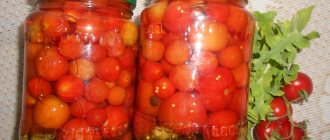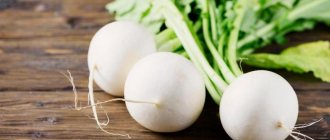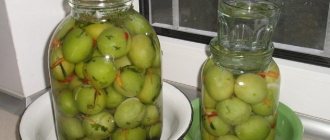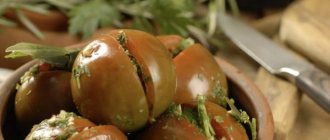Fresh parsley perfectly complements familiar dishes, gives them a piquant taste and aroma, and most importantly, contains a huge amount of useful substances. Every housewife strives to have parsley on the table not only in the summer, when all the greens grow in abundance, but also in the winter, when the season of fresh herbs, unfortunately, ends. How to prepare fresh parsley for future use?
There are several basic ways to preserve parsley for the winter:
- drying;
- freezing;
- pickling.
Dried parsley for the winter
Drying fresh parsley is quite simple, and this method allows you to preserve as much as possible all the valuable nutrients contained in the green sprigs.
The first thing to do is to sort through the bunches, removing all yellowed and darkened leaves and twigs, as well as debris and unnecessary grass. Cut off the roots and some of the thick stems.
Then the parsley needs to be washed thoroughly . It is best to take a wide dish for this, for example, a basin, fill it with cold water and put the greens in it. Let it sit for a while so that the dust and sand settle to the bottom, rinse and remove. This should be done several times, depending on how dirty the greens are.
Place the parsley on a clean towel and carefully blot the top with a napkin to remove excess water.
Then you can proceed in two ways.
The first method is to tear off the leaves from the branches and spread them on a dry kitchen towel in a thin layer. Leave to dry for several days in the fresh air, in a ventilated area, turning occasionally. Greens cannot be dried under the sun's rays, as their leaves will quickly turn yellow and lose their quality.
The second method is to finely chop bunches of washed parsley, pour onto a dry cloth, and dry as described above, stirring from time to time. It is convenient to add such greens to first courses, simply pouring the required amount at the end of cooking.
Many housewives dry parsley in the oven for the winter, because this way the process takes much less time. To do this, you need to cover a baking sheet with parchment paper and lay out leaves or chopped herbs in an even thin layer. Dry for about two hours at a temperature of 35-40 degrees, then increase to 70 degrees and leave for 20 minutes.
When drying greens in the oven, you need to take into account that under the influence of even not very high temperatures, delicate leaves may lose some of their beneficial properties.
After the parsley has dried, it should be placed in clean, dry jars or linen bags and stored in a dark place.
How to use parsley preparations in winter
Parsley is actively used in cooking, home cosmetology and herbal medicine. Frozen stems and leaves are added to salads, first and second courses, and they are used to decorate food before serving.
The dried plant is used mainly in first courses and sometimes in the preparation of sauces. The pickled and salted herb is great for sauces and gravies, and it is also used as a component of main courses.
After defrosting, parsley has the same properties as a fresh plant, which is why it is suitable for preparing water infusions or alcohol infusions. Decoctions and infusions of parsley in water are used to improve the condition of skin and hair.
Freezing fresh parsley for the winter
Frozen parsley also retains all its qualities, fresh taste and wonderful aroma well. If you freeze it in bunches, you can use the branches to decorate dishes, and if you cut it, you can simply add the prepared greens to your dishes according to your taste.
To begin, the sprigs of greenery should be sorted out and washed well , as described in the drying method. Place on a dry kitchen towel and blot off excess moisture. Transfer to another napkin and let dry slightly. The greens should be dry, but they should not be allowed to wilt.
Now you can separate the parsley into small bunches and put each bunch in a bag. Roll the bags into rolls, pressing lightly to release the air. Place everything in a container or bag and put it in the freezer. In winter, greens in such bunches can be cut without defrosting, or the branches can be used for decoration.
Another way is to immediately cut the prepared greens , put them in a container and freeze . All you have to do is take it out of the freezer, add it to a dish and enjoy the fresh aroma of summer.
You can freeze parsley in portions. To do this, clean and dried greens must be finely chopped and placed in molds for making ice cubes. Then fill the cubes with water and freeze, then transfer to a bag and store in the freezer. These cubes are very convenient to throw into first courses or stewed vegetables.
You can freeze parsley in oil in a similar way. Melt the butter and pour in the chopped herbs placed in ice trays. Freeze and store in the same way as ice cubes. In winter, such a cube will be good to put in soup or stew, and if you wait until the butter melts, you can make a fragrant sandwich .
Other storage methods
Parsley can be preserved in other ways: freezing, drying, pickling, pickling.
Freezing
To provide parsley with a longer shelf life, when preparing the product for the winter, you need to resort to freezing. There are several ways.
In ziplock bags
Chop the washed and dried parsley in a convenient way and transfer it to ziplock bags. Distribute the greens evenly among the packages. Then close the clasp, leaving a small hole of 2-3 mm. Release the air from the bag through it; to do this, press it with your hand. When all the air has escaped, close the clasp all the way.
Place bags of weed in the freezer. In winter, pour the required amount from the bag and immediately place it in a dish.
In ice cubes
Place the chopped greens into molds for making ice cubes, fill with water and put in the refrigerator. After freezing, transfer the cubes to a container or bag and store in the freezer. Ice cubes are very convenient to use - you can throw them whole into soup or stew, they will quickly melt, releasing fresh herbs.
You can experiment and use not water as a filling, but melted butter or vegetable oil, after seasoning it with salt so that the parsley acquires a special taste.
Bunches
Freezing greens in bunches will take a minimum of time. It should be prepared for freezing - washed and removed dry leaves. To avoid chunks of ice when defrosting, the greens need to be dried by laying them on a dry waffle towel and leaving for 20 minutes.
Pack into small bundles, which will be used as a single portion for making a dish. Place the bunches in bags and put them in the freezer. The only drawback of this method: the greens need to be defrosted in bunches, which means they will have to be cut.
Drying
The drying process takes a lot of time, but parsley prepared in this way takes up little space and retains all the minerals and vitamins in its composition.
On open air
To dry the greens naturally, you need to chop them and spread them in a thin layer on a baking sheet, after covering it with a towel or parchment. Cover the top with gauze, securing the fabric at the edges. Place the baking sheet in fresh air in a shaded place, since exposure to the sun's rays destroys the valuable components in the product. After 3-5 days, the dried herbs should be transferred to dry containers and hermetically sealed.
In the oven
When using an oven, the drying process occurs faster than in the open air, but the parsley loses some of its valuable substances.
Step-by-step instructions on how to dry parsley in the oven:
- Separate the greens from the stems and chop.
- Place in an oven preheated to 50°C for an hour and a half.
- Dry with the door open, stirring occasionally.
- Increase the temperature to 70°C and keep the greens for another 20-30 minutes.
- Pack the dried product in glass containers or fabric bags with drawstrings.
It must be stored in a dry and unlit place. The shelf life of the product is 2 years.
Microwave
Place the parsley on a plate, preferably flat, covering the bottom with a napkin. The power of the device is maximum. The time for which the greens should be placed in the microwave is 1 minute, then you need to examine the appearance of the product. If it is not dry enough, you need to put it on again for 1-2 minutes. And so continue the procedure until the parsley reaches the required state.
Rub the finished product with your palms and place in ventilated containers. Store containers in a dark and dry place.
In a special dryer
This kitchen assistant will always help out any housewife. To do this, the greens need to be chopped or laid out whole. Set the “For herbs” mode and set the temperature to 45 ⁰C. It is important to swap trays during the drying process. It is difficult to indicate the exact time; it depends on related factors: air humidity and the thickness of the slice.
In salt
Salt allows parsley to remain fresh for a long time, as it is considered a good preservative that prevents the growth of bacteria that cause the fermentation process. This method is easy to implement indoors:
- Sort and wash the greens, dry using a towel. This will help remove excess moisture.
- Chop the prepared product into small pieces.
- Combine the workpiece with salt at the rate of 1 tbsp. l. substances per 200-300 g of leaves.
- Once the juice is formed, you need to stir the mixture until the salt dissolves and package it in sterilized jars, seal with a tin or nylon lid.
- Store in a cool place.
When using this product, you should take into account the amount of salt in its composition and add less salt to the prepared dish.
In oil
A simple recipe for preserving parsley. And very easy to use - the universal preparation can be added to fresh salads, sauces, soups, or simply dip a piece of fresh bread into it. This is a very tasty and aromatic additive.
How to make a universal appetizing preparation:
- Finely chop the greens, washed under running water.
- Place in sterilized jars, do not compact.
- Pour vegetable oil to the very top, which should completely cover the chopped greens. mix everything well.
- Seal containers tightly.
This product is stored in a cool place, the temperature of which does not exceed +8°C.
You can prepare a vitamin mix from greens by adding basil, rosemary, and cilantro. It is better to use olive oil.
In brine
This preparation option will allow you to preserve parsley throughout the winter, while the taste and color of the greens will not change, and all vitamins and nutrients will remain in full.
- Rinse the parsley under running water and spread in a single layer on a clean towel to dry.
- Chop the leaves into medium pieces; some can be left whole to decorate dishes in winter.
- Place the prepared cuts into sterilized 0.5 liter jars.
- Make a brine by taking 1 liter of water, 50 g of sugar, 50 g of salt and 200 ml of vinegar. Combine all ingredients and boil.
- Pour boiling brine over the greens in a jar and seal with metal lids.
When the parsley season is in full swing, it is better not to miss the moment and make a lot of preparations for the winter. You shouldn’t limit yourself to just this marinade recipe, but experiment and create your own stock that will delight you on winter days.
You can marinate parsley with various herbs or vegetables (onions, garlic).
Pickling parsley for the winter
This method of preserving parsley was once very popular, but with the advent of powerful freezers that could hold large quantities of fruits, vegetables and various herbs, it has slightly lost its relevance. But even now, many housewives prefer to pickle herbs for the winter. After all, salt is an excellent preservative , which allows greens to remain fresh for a long time and not spoil.
For pickling, you need to take one tablespoon of table salt for one large bunch of parsley. Sort through the greens, rinse well, cut off the roots and thick stems and dry lightly. Grind with a knife or in a blender, place in a clean bowl, and mix well with salt.
Then place tightly in prepared dry jars, filling them to the top. These greens should be stored in the refrigerator, scooping with a clean spoon as needed. Before you start cooking, do not forget that the greens are already well salted and put a little less salt in the dish.
In addition to the main ways to preserve parsley for the winter , there are several more not so common ones.
How to keep parsley fresh for a long time
In order to make full use of the source of minerals and vitamins during the cold season, it is important to know about the intricacies of preserving the product. There are several rules to help keep parsley fresh for a long time:
- Spicy herbs from the garden should be picked before noon, as soon as the dew dries. It is recommended to tear it rather than cut it in order to preserve its juiciness longer.
- Before storage, you need to separate the green part from the rhizome.
- Sort all the leaves, removing dry and yellowed specimens. The harvested grass should not have a musty smell or signs of rotting.
- Wash the prepared greens and dry well.
- After pre-treatment, the parsley is ready, all that remains is to choose the appropriate storage method or recipe.
Cooling in cans
As in the previous methods, the parsley must be sorted, unsuitable branches and thick stems removed and thoroughly washed several times in cold water . Let the water drain, dry with towels, then in the air - the greens should be completely dry!
Wash and dry small jars well, fill them without compacting them with herbs and close tightly with clean lids. You can use jars with screw caps. These greens can be stored in the refrigerator for about three months. The advantage of this storage is that the parsley remains absolutely fresh; it is perfect for decorating both everyday and holiday dishes.
And finally, some practical tips that will help housewives learn how to preserve parsley for the winter:
- It is better to prepare young parsley by collecting the greens before the plant blooms, since young greens are more tender, dry quickly, and have a brighter taste and aroma.
- It is better to freeze in small bunches in order to use them immediately, because greens thawed several times lose their properties and appearance.
- If the bunches turn out to be large, you can take the bunch out of the freezer, quickly cut off the required amount with a knife, and put it away again. Frozen parsley is tender and easily cut with a sharp knife.
- Having taken out a jar of chilled parsley from the refrigerator, you should quickly take as much as you need, trying to ensure that as little warm air as possible gets into the jar. Immediately close the lid and put it back in the refrigerator.
- Jars of frozen and chilled greens are stored not in the freezer, but in the refrigerator. Therefore, when harvesting parsley using these methods, you need to provide the necessary space for them.
- Well, the least amount of space in the kitchen will be taken up by canvas bags with dried herbs. In a cabinet where it is dry and dark, it will be perfectly preserved for a long time.
Storing fresh parsley in the refrigerator
If you plan to use parsley in the near future, there is no need to prepare it - within a few weeks the spice will not lose its presentation, taste and beneficial qualities. It is recommended to store curly leaves and roots separately, using containers that can be tightly closed.
Before sending parts of the plant into containers, be sure to rinse them and allow the water to drain (use a colander for this). After washing, remove excess moisture with a napkin. It is not necessary to completely dry the spice - a small amount of moisture will prevent the leaves from drying out.
See also
How and when to sow parsley correctly before winter and whether you canRead
How to store at home
Storing winter parsley preparations directly depends on the method of their preparation.
At room temperature
Workpieces intended for storage at room temperature are usually recommended to be kept in kitchen cabinets . The container must be hermetically sealed to prevent the aroma from escaping.
Improper storage can lead to the development of mold and food pests. It is best to choose glass or plastic jars. The second must be marked “for food products”. Cloth and cardboard bags are also suitable for these purposes, but they are more difficult to maintain.
In a refrigerator
Pickled, salted, frozen and immersed in vegetable oil, parsley is excellently stored in the refrigerator. This can significantly extend the shelf life of the product.
But it is not recommended to use products from the same harvest for more than one year. For parsley in oil, the temperature regime must not exceed +7°C.
Harvesting parsley
The grass remains green and lush until autumn, which is why it is collected throughout the season. You will prepare it for the winter without waiting for the end of autumn; reserves of spices can be made in advance. All beneficial and taste qualities will remain unchanged, the main thing is that the plants are of high quality and healthy, and the leaves have a rich dark green hue. Many varieties of parsley are ready for harvest within 2-3 months after planting. Young first-year parsley is the most fragrant.
When greens and roots are to be harvested, it is better to dig up the plant in the fall, when the maximum amount of elements beneficial to health has accumulated in the rhizome.
When harvesting, the stems should be cut at the root; new branches will grow very soon. If you do this along the edge of the bush, the inner stems will grow better.
So that the greens do not die in winter, and you can expect a harvest next season, it is recommended to cut everything off.
All collected parsley must be divided:
- leaves;
- roots - carefully remove dirt, rinse and dry.
Features of storing parsley in winter
In order for parsley to remain suitable for consumption for a long time in winter, it is necessary to carefully prepare it and choose a storage method. In unsuitable conditions, the product will lose nutritional value and spoil.
You can keep the healthy spice fragrant by collecting its above-ground part in June. And the roots are harvested at the very end of summer.
Semi-finished parsley products are stored dried, frozen, pickled and canned.
Preparation
Prepare parsley for winter storage as follows:
- separate the greens from the roots, as they need to be kept separately;
- remove dry and rotten parts of the plant;
- wash under cold running water;
- dry at room temperature.
After this, you can proceed to selecting a workpiece option.
Drying parsley roots and greens
Drying has its advantages over all other harvesting methods . The dried mass takes up little space and does not require special storage conditions; dry seasoning can be stored without refrigeration and save space for other products. Dried parsley can be used in almost any dish. The technology for harvesting roots is similar; before putting them in the dryer, prepared and cut roots need to be dried a little and allowed to lie in the air.
Now, thanks to these simple recipes, you know how to prepare parsley for the winter and preserve the aroma. You can enjoy the aroma and taste of fresh, healthy greens all winter long.
Preparing a mixture of dill and parsley
The aroma of dill and parsley goes well together; these herbs complement each other. This mixture is even more saturated with vitamins and can be used in any dishes.
Preparation of ingredients is the same as in previous recipes . Place the chopped herbs in sterile jars and add salt at a ratio of 5:1.
Prepare, sort and wash the herbs. Dry and grind them separately. Sprinkle 15 grams of salt at the bottom of the container, then alternately a row of dill and a row of parsley, and salt. Repeat layers until the container is full. Roll up the cans. Keep refrigerated. As in the previous recipe, the shelf life is 6 months.
Properly harvested herbs and roots from the garden will be much healthier in winter than vegetables sold in our stores out of season. After all, they are grown using artificial fertilizers and growth stimulants and do not even have a characteristic taste or smell.











